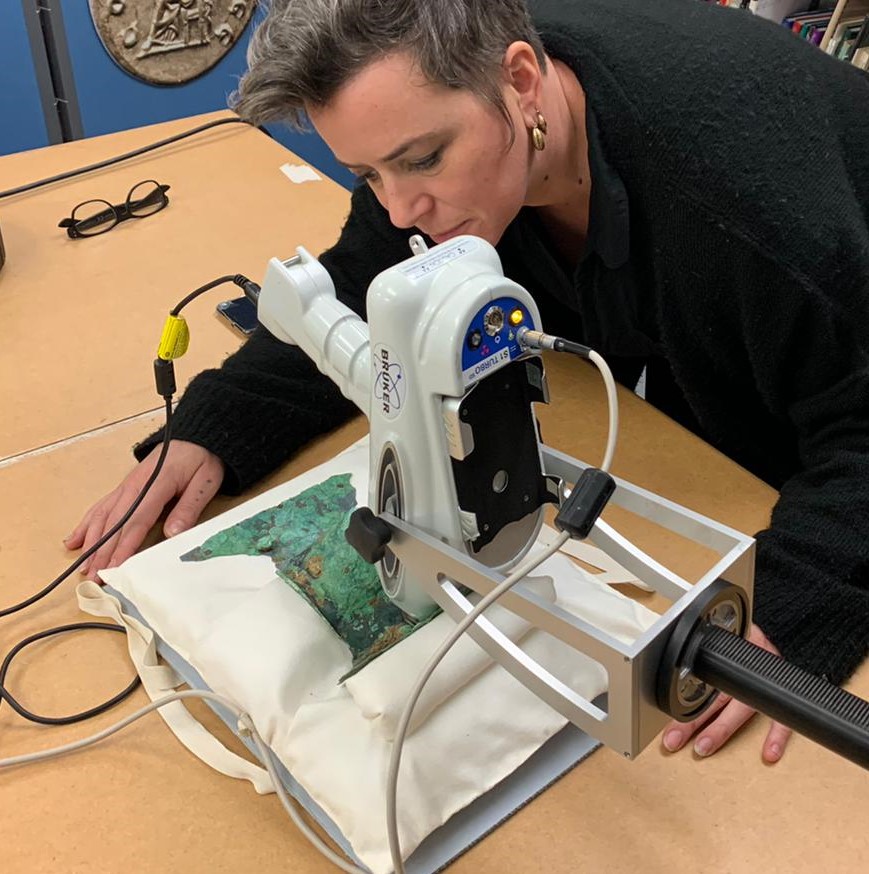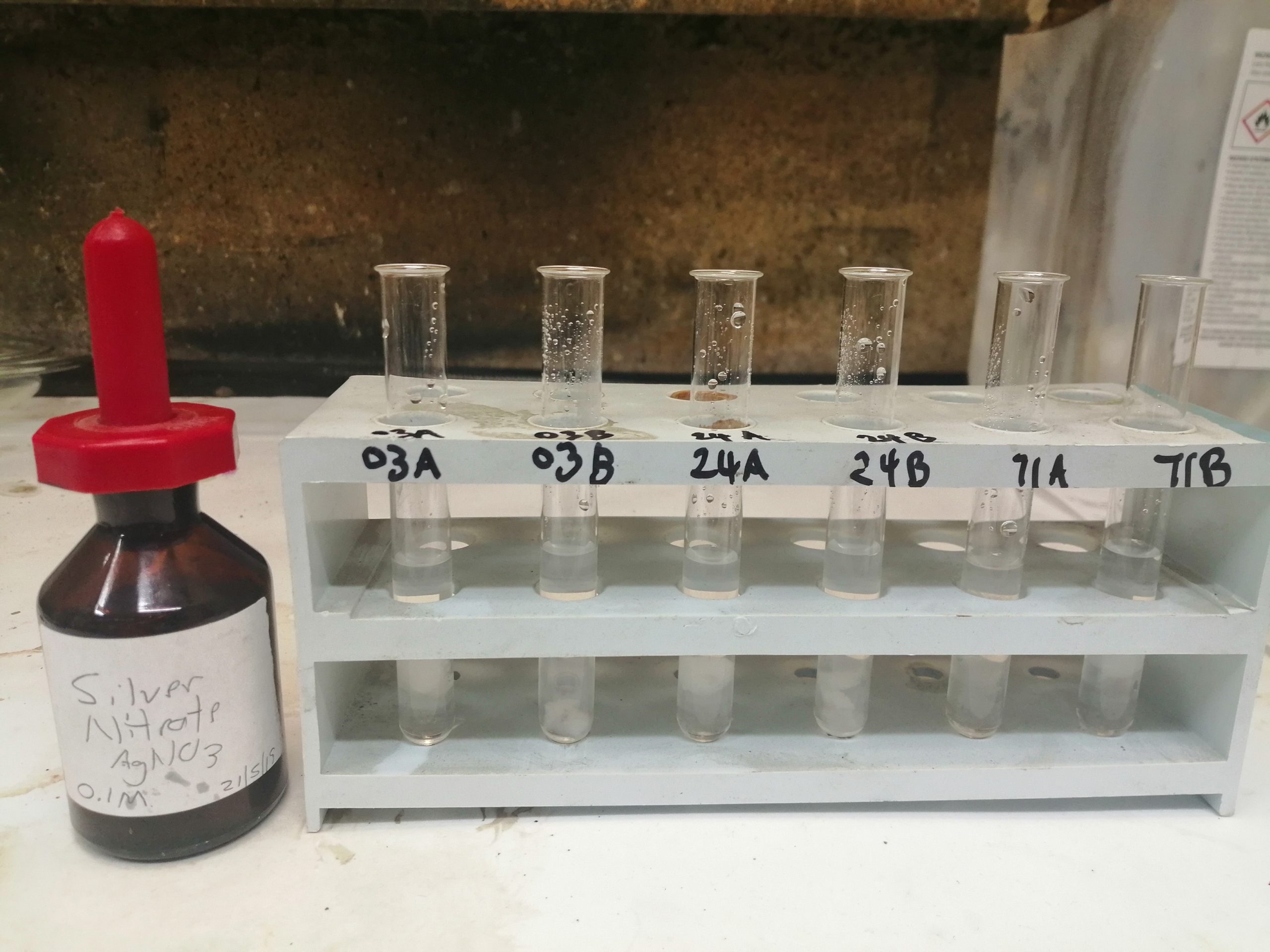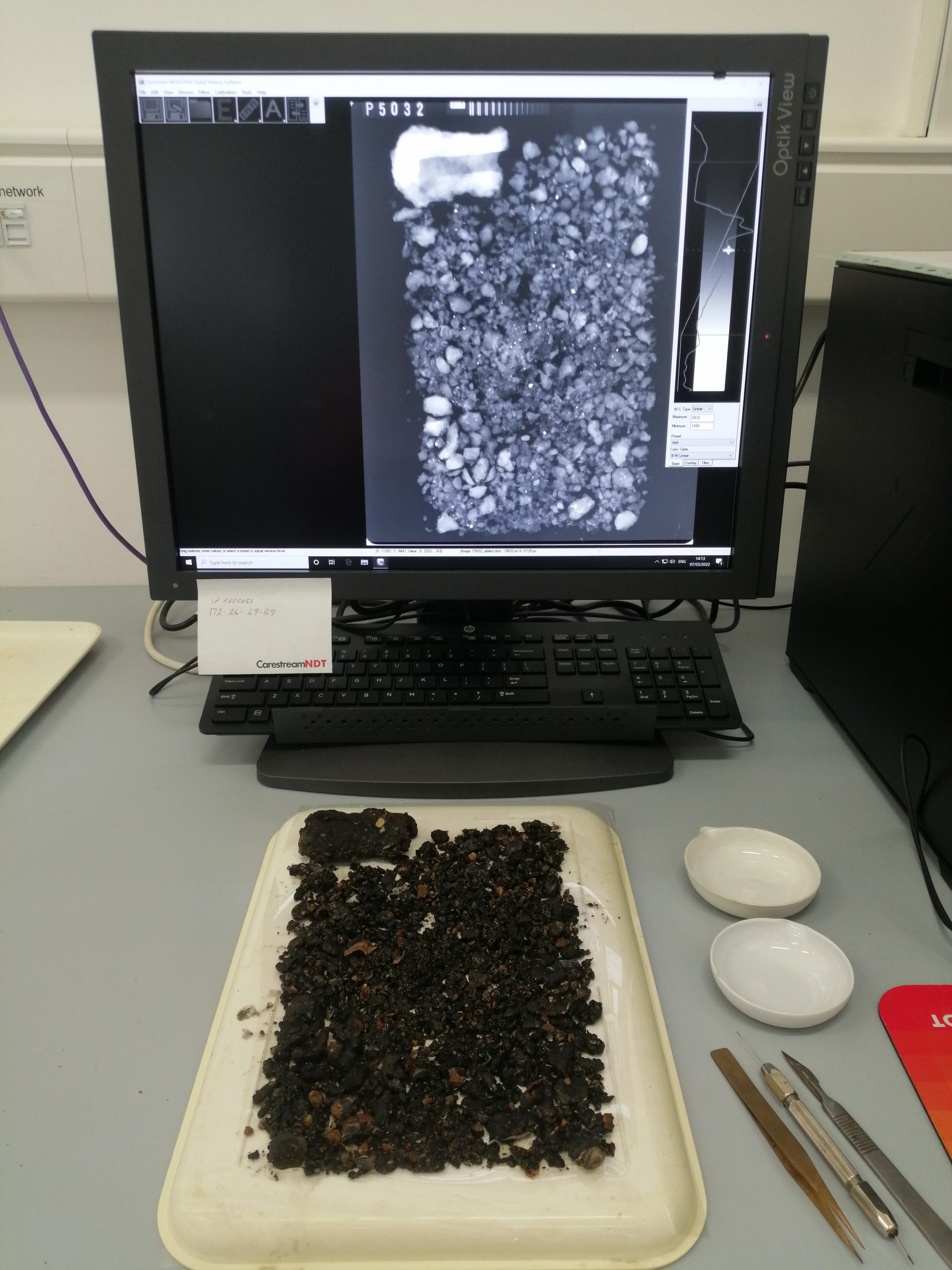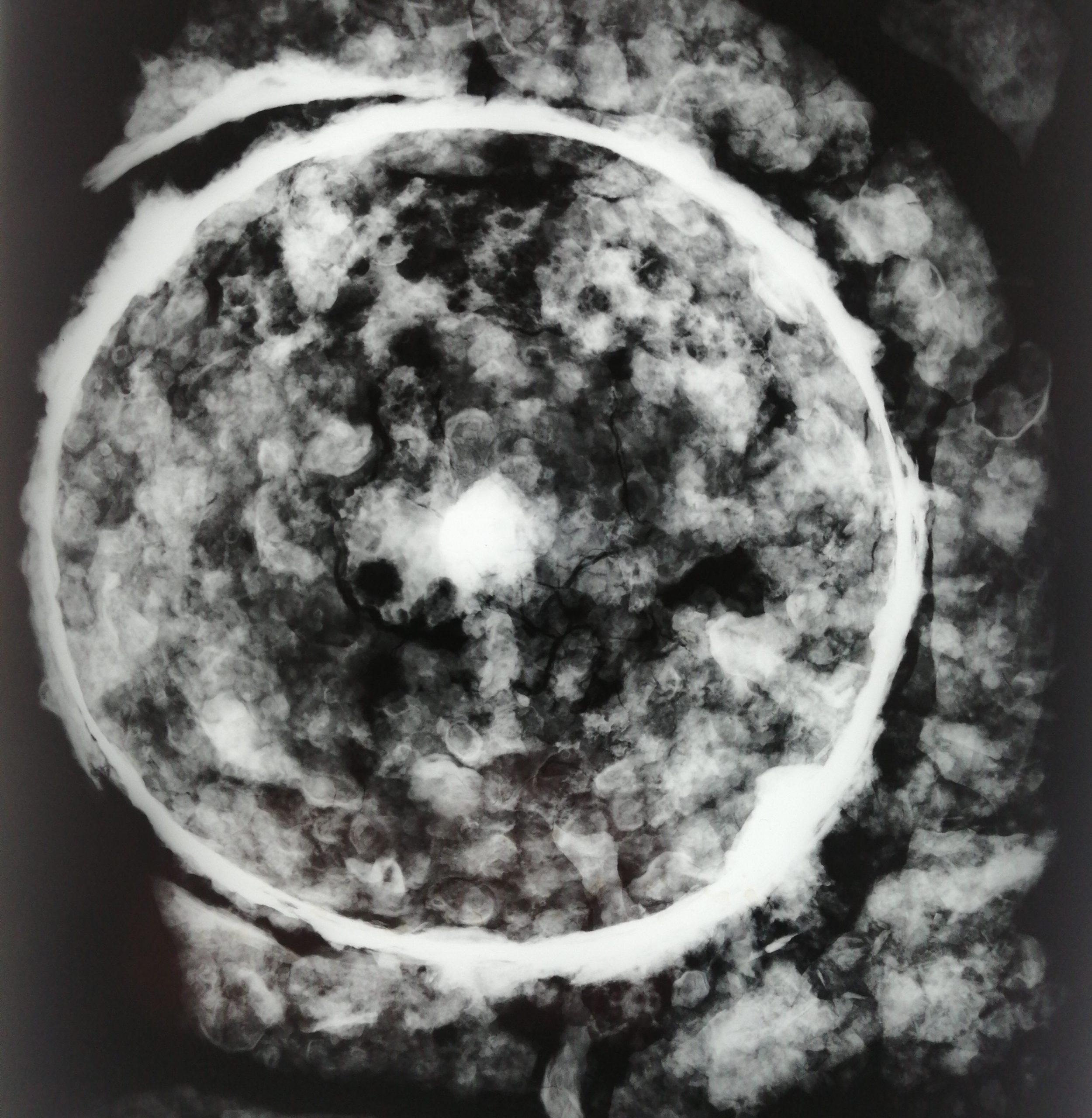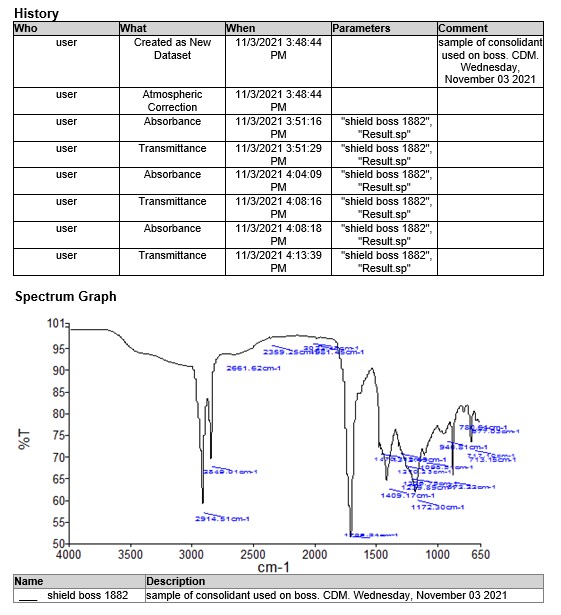Analytical work
- Portable XRF – analysis of armour from the North Bursted Man burial, revealed that solder was used as a joining technique. The elemental composition of the solder used, and the armour, added to the pool of knowledge regarding historical metalworking techniques during that period. (The Novium museum, Chichester)
- Material characterisation tests – Silver nitrate was used to identify black corrosion products sampled from the gilt silver banqueting suite at Brighton Royal Pavilion. High chloride levels were confirmed, aiding the development of a conservation treatment.
- Tensile testing – The ultimate tensile strength of metal gap-filling products was compared with the yield point of copper tokens, in order to develop a custom gap-filling compound for a historical copper garden urn.
- X-ray images (a) – digital images were used at Historic England, to identify lead glass beads in marine concretion debris, in order to retrieve them. (b) X-ray photography was taken and developed to understand the extent of corrosion in a Saxon shield boss, and develop a treatment.
- FTIR – analysis was taken of an unknown material used to consolidate two Saxon shield bosses in 1895. Databases were used to compare the analysis, cross referencing with alternative possibilities, to confirm the conclusion of paraffin wax.
Skills
- Ability to read and understand analytical spectra, and competence to research if further information is needed, and in order to make intelligent choices.
- Interpretation of scientific data presentation and understanding of material science.
- Clear communication of treatments with stakeholders.
